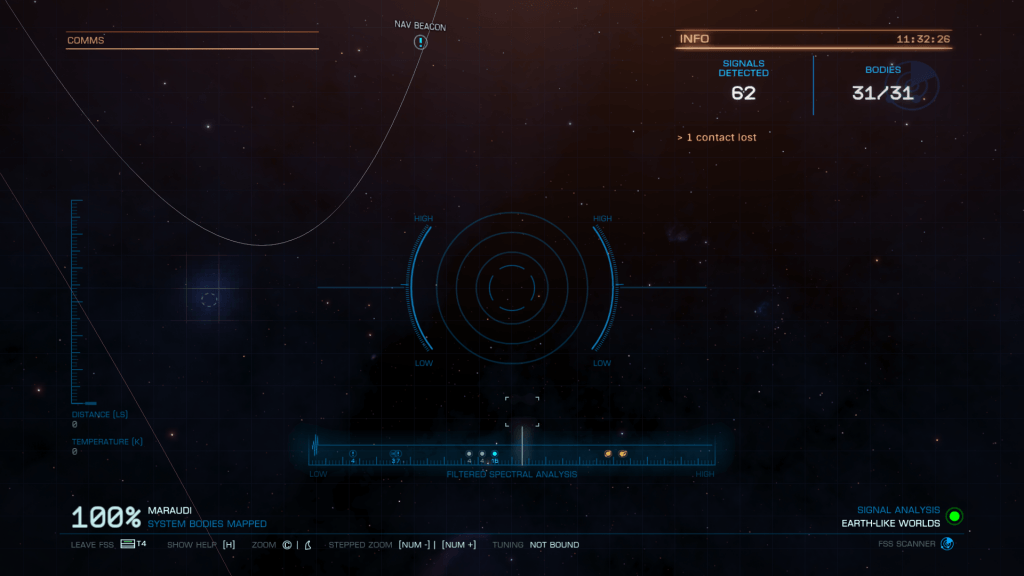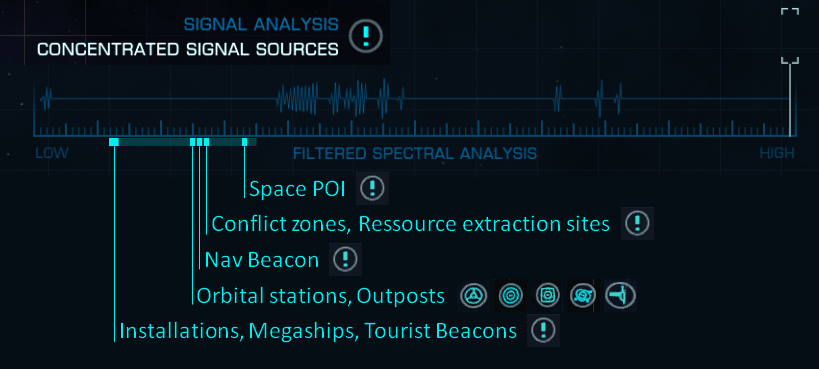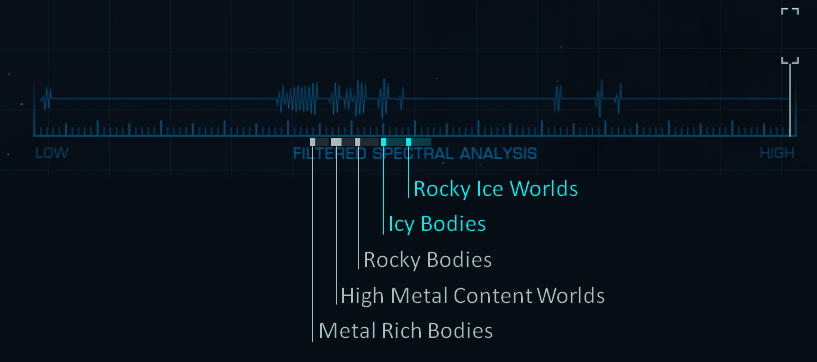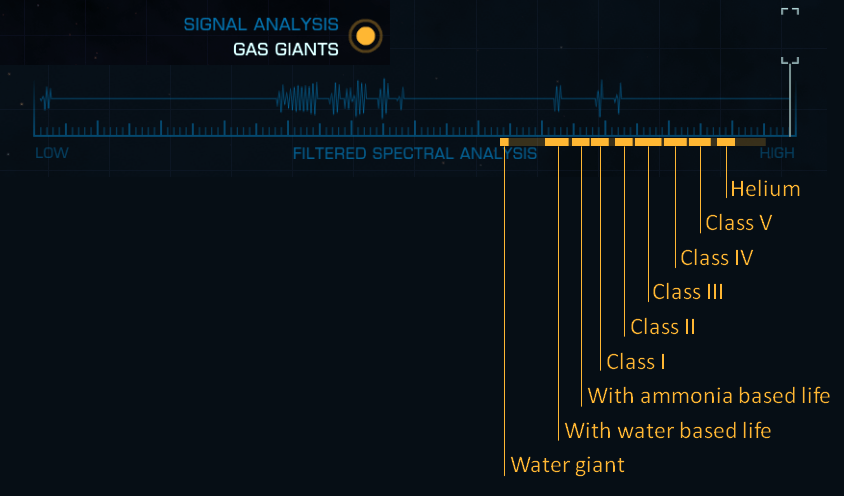
This page deepens the use of spectral analysis.
Main frequency ranges
The FSS interface indicates at the bottom right the type of body corresponding to the currently selected frequency (white cursor). Here it is “Earth-Like Worlds”. Every type has a color.

Here are the frequency ranges for each type of body, from left to right of the frequency axis:












The coloured symbols corresponding to the different types are uses once they are discovered:
- In the view of the FSS, to the position of the body or the signal source
- Below the frequency axis
![]()
Signal Sources
There are two types of signal sources:
- Transient signal sources are persistent for a given time and then disappear.
- Concentrated signal sources are completely persistent.
Transient signal Sources
Transient signal sources include:
- Conventional sources of human signals (degraded emissions, convoy,…)
- Sources of non-human signals (Thargoid or Guardian)

Concentrated Signal Sources
Concentrated signal sources include:
- Installations
- Megaships
- Tourist beacons
- Orbital stations and outposts
- Nav beacon of the system
- Conflict zones
- Resource extraction sites (bounty hunting)
- Space points of interest

Planets without atmosphere
The planets of the following types can be without atmosphere, and thus landables. These planets can have points of interest (geological, biological, human, Thargoid or Gardian) on their surface.
- Metal-rich bodies
- High Metal Content Worlds
- Rocky Body
- Icy bodies
- Rocky Ice Worlds
In each frequency range of each of these types, the planets without atmosphere appear at the left end of the range:

Gas giants
The different types of gas giants are as follows:
- Water giant
- With water based life
- With ammonia based life
- Class I
- Class II
- Class III
- Class IV
- Class V
- Helium Rich Gas Giant

Symbols by type
At the top of the white line indicating the selected frequency, a symbol consisting of 3 lines from 0 to 3 chevrons is shown.
This symbol is characteristic of the type, and is carried over the three circles of the reticle when:
- The frequency selected is close enough to the frequency of the body
- The reticle passes near the body
Symbols by type:
| Type | Symbole |
|---|---|
| Transient Signal Source | |
| Concentrated Signal Source | |
| Asteroid Clusters | |
| Metal Rich Bodies | |
| High Metal Content Worlds | |
| Rocky Bodies | |
| Icy Bodies | |
| Rocky Ice Worlds | |
| Earth-Like Wolrds | |
| Ammonia Worlds | |
| Water Worlds | |
| Water Giant | |
| Gas Giant with water base life | |
| Gas Giant with ammoniabase life | |
| Gas Giant class I | |
| Gas Giant class II | |
| Gas Giant class III | |
| Gas Giant class IV | |
| Gas Giant class V | |
| Helium Rich Gas Giant |
Only the position of the chevrons depends on the type.
Their width/spacing indicates whether the body is ringed or not:
| Example | Ringed | Not Ringed |
|---|---|---|
| Gas Giant Class I | ||
| Gas Giant Class II |